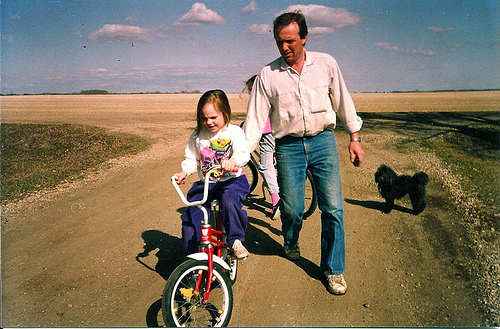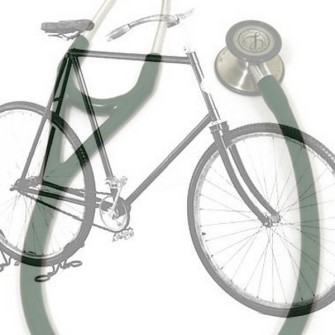
Children are the Future of Cycling: City Cycling Talk with John Pucher
Velo-city Global in Vancouver is less than a week away, and yes, it’s going to be all about children. John Pucher & Ralph Baulher’s new book, “City Cycling”, dedicates a whole chapter to kids and they’ve been kind enough to share some insights with the cycling world.
“Cycling can provide children with a range of physical, mental, and social benefits, greatly enhancing their mobility and independence,” Pucher explains.
“But sadly, cycling rates for children have fallen in most countries in recent decades,” he admits.
According to Pucher, the downward trend can be explained by increased car ownership among parents, longer distances between home and school, increasing traffic danger, and parental fears about the personal safety of their children. His new book, ‘City Cycling’ examines ways to reverse the downward trend in child cycling based on successful policies in some countries and cities.
“Improving cycling safety, especially for the trip to school, is a key approach, but other complementary programs are also required,” says Pucher.
Just as rates of cycling vary greatly among countries for adults, they also vary for children. Most of the available statistics are only for the trip to school, showing that the bike share of trips ranges from a low of only 1% in the USA and 3% in the UK to 14% in Germany, 17% in Switzerland, and 49% in the Netherlands. Only in the Netherlands do more children bike to school than walk to school (49% vs. 37%). By comparison, a much higher percentage of schoolchildren walk than bike in other countries: 10% vs. 1% in the USA; 38% vs. 3% in the UK; 33% vs. 14% in Germany; and 55% vs. 17% in Switzerland.
Co-Editor of City Cycling, Ralph Buehler believes that the Netherlands are the stars of the show when it comes to kids and cycling.
“The Dutch are clearly doing something right,” says Buehler “and it merits taking a close look at Dutch policies to see what lessons can be drawn for raising cycling rates among children in other countries.”
Dutch Secrets to Success
“Although Dutch children learn cycling from their parents or siblings, all Dutch children are required to take in-class on-the-road lessons in safe cycling (and walking) by the 3rd or 4th grade,” Buehler explains.
"...all Dutch children are required to take in-class on-the-road lessons in safe cycling"
“This kind of comprehensive traffic safety training should be required of children in other countries as well. Not only does it promote safety but it introduces all boys and girls to cycling at a young age but it also reinforces the perception that cycling is a normal way to get around.”
At the end of the day however, you simply must have proper infrastructure.
“An extraordinarily well-designed, integrated, comprehensive network of cycling facilities separated from motor vehicles in the Netherlands provides safe routes for children to school as well as safe, convenient, and comfortable cycling for everyone,” says Buehler.
In the Netherlands (as well as most of northern Europe), driver training and licensing is rigorous and expensive. It specifically focuses on the legal requirement to avoid endangering cyclists and pedestrians, especially children. In any crash involving child cyclists, motorists are virtually always found to be at fault and legally responsible for all damages. That engenders cautious and considerate driving behavior by Dutch motorists which makes cycling safer, both in fact and as perceived by cyclists.
In any crash involving child cyclists, motorists are virtually always found to be at fault and legally responsible for all damages
“Unfortunately, almost all of these important Dutch policies are lacking in Australia, Canada, and the USA, which helps explain the very low rate of child cycling in those countries,” says Buehler.
Germany, Denmark, Sweden, Belgium, and Switzerland have implemented most of the Dutch policies, although to a lesser extent, which helps explain the much higher levels of child cycling in those other European countries compared to Australia and North America.”
What can we do in North America and Australia?
Noreen McDonald who writes about children in the book believes it is crucial to establish cycling as an accepted and valued mode of travel for children, fostering lifetime habits that benefit both individuals and communities.
“But that will take time and require changes and improvements in current education, planning, and transportation practices. Children (and adults) need infrastructure to provide safe conditions for cycling along good routes connecting key destinations,” says McDonald.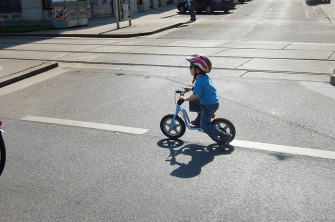
“The design of cycling infrastructure should vary according to local conditions, but the most effective initiatives will consider children’s mobility needs from project inception. As in most countries of northern Europe, safe cycling should be an integral part of primary education, particularly in physical education classes,” she adds.
McDonald is definitely onto something. These sorts of policy improvements would lay the foundation for establishing a culture of cycling in car-oriented countries such as the USA, Canada, and Australia.
Creating cycle-friendly cities? It’s child’s play
“The goals of making cities more cycle-friendly and more child-friendly are remarkably similar,” says Paul Tranter, a world-renowned expert on children’s mobility issues, who will also be a keynote speaker at Velo-city Global in Vancouver next week.
Children & Cycling at Velo-city
Velo-city is going to have a huge focus on Children.
On Friday June 29 at 09:00, there will be a session on "Empowering the Future: Children and Cycling" featuring Paul Tranter.
Read the Velo-city program for more details
“In car-dominated cities, the needs of both cyclists and children have been subordinated to the demands of motorists. To achieve child-friendly and cycle-friendly cities requires a fundamental cultural shift in city life and planning,” explains Tranter.
He believes that this can be stimulated through a focus on children and play. In places where children’s playful exploration is a priority, cyclists and pedestrians of all ages benefit. It’s quite an interesting point that is being made.
Yet despite a growing international focus on children’s rights, children’s right to play has been eroded in many cities in recent decades. Children play less outdoors, and they have less contact with nature as their freedom to independently explore their neighbourhoods has declined markedly in many nations. Our attempts to increase children’s safety have focused on individualistic strategies such as keeping children inside cars, which collectively increase risks for everyone.
Tranter advocates taking a more holistic and society-wide perspective, aimed at creating child-friendly cities, which would restore children’s freedom make our cities happier, healthier and more livable for all citizens.
“The goals of making cities more cycle-friendly and more child-friendly are remarkably similar”
With Velo-city round the corner, this book could not come at a better time.
This is article is part of a series on the upcoming book "City Cycling". As new articles in the series appear online, click on the image below to view them. Feel free to repost any of these articles on your website to help spread the word about this new book.
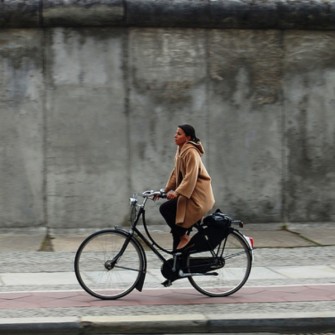 |
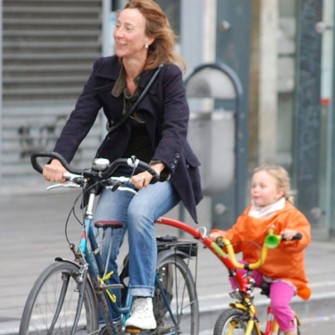 |
|
| Health and Cycling
Cycle For One Hour and You'll Live an Hour Longer |
It’s All About ‘High Heels on Wheels’ |
Children Are The Future of Cycling |
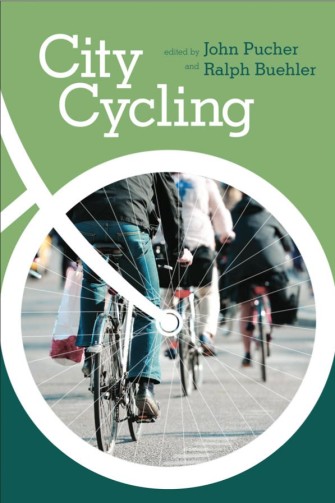 Get Your Hands on"City Cycling"
Get Your Hands on"City Cycling"
The book appears in print in September but can already be ordered at a pre-publication discount ($18) at Amazon.com and BarnesandNoble.com. For further information about the book, including a detailed table of contents and listing of contributors, see the following website:

About the Editors of City Cycling
John Pucher is a professor in the School of Planning and Public Policy at Rutgers University in New Jersey. He has conducted research on a wide range of topics in transport economics and finance, including numerous projects for the U.S. Department of Transportation, the Canadian government, and various European ministries of transport. For over three decades, he has examined differences in travel behavior, transport systems, and transport policies in Europe, Canada, the USA, and Australia. Over the past 15 years, Pucher’s research has focused on walking and bicycling, and what North American and Australian cities can learn from European cities to improve the safety, convenience, and feasibility of these non-motorized modes.
Ralph Buehler is assistant professor in Urban Affairs & Planning at Virginia Tech in Alexandria Virginia. Most of his research has an international comparative perspective, contrasting transport and land-use policies, transport systems, and travel behavior in Western Europe and North America. His research examines the influence of transport policy, land use, and socio-demographics on travel behavior; active travel and public health; and public transport demand, supply, and policy. Buehler’s goal is to identify and share policy lessons on how to achieve a more environmentally sound, economically efficient, and socially equitable urban transport system.
Contact the author
Recent news!
Upcoming events
Contact Us
Avenue des Arts, 7-8
Postal address: Rue de la Charité, 22
1210 Brussels, Belgium


